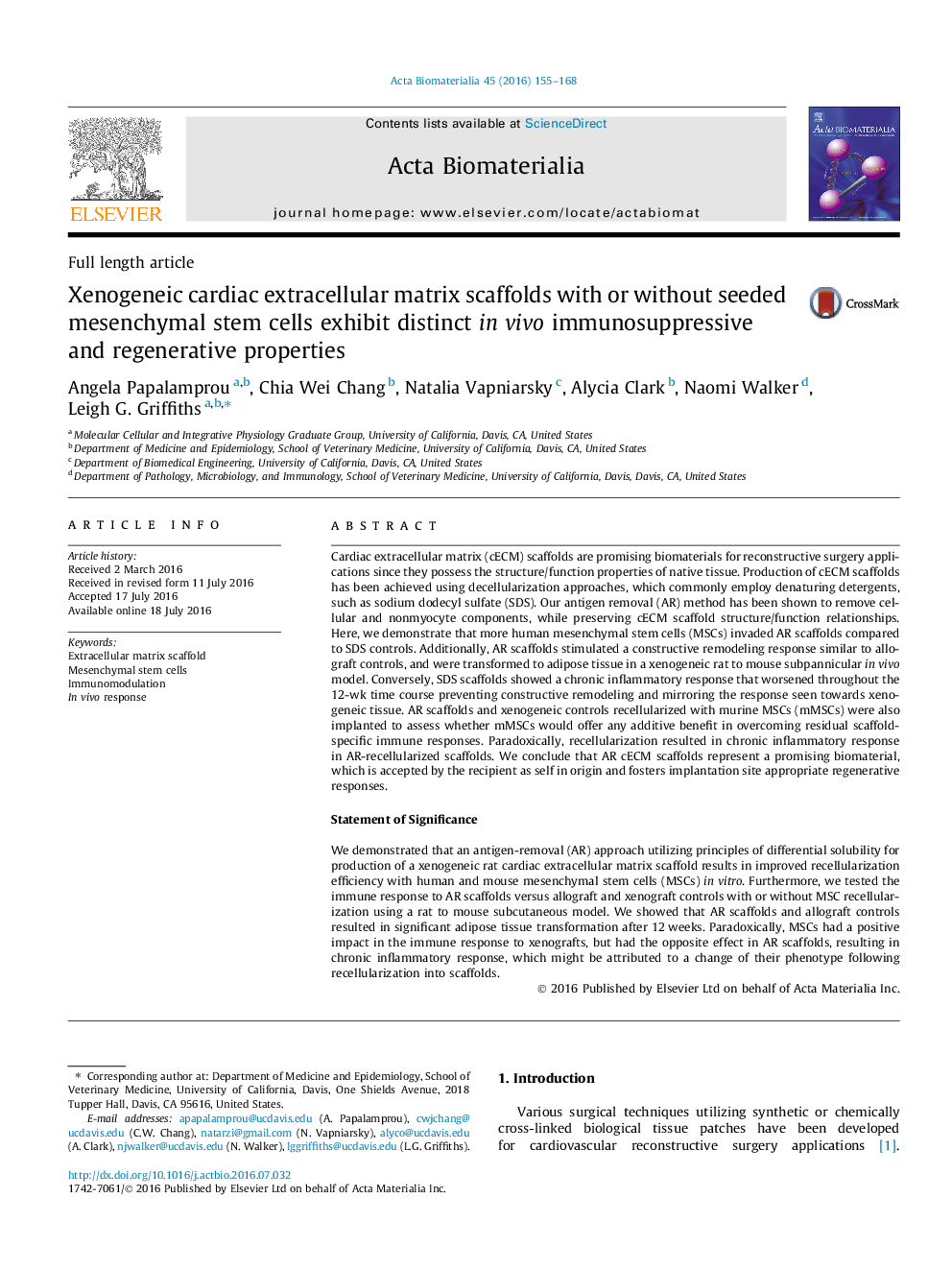| Article ID | Journal | Published Year | Pages | File Type |
|---|---|---|---|---|
| 6450296 | Acta Biomaterialia | 2016 | 14 Pages |
Cardiac extracellular matrix (cECM) scaffolds are promising biomaterials for reconstructive surgery applications since they possess the structure/function properties of native tissue. Production of cECM scaffolds has been achieved using decellularization approaches, which commonly employ denaturing detergents, such as sodium dodecyl sulfate (SDS). Our antigen removal (AR) method has been shown to remove cellular and nonmyocyte components, while preserving cECM scaffold structure/function relationships. Here, we demonstrate that more human mesenchymal stem cells (MSCs) invaded AR scaffolds compared to SDS controls. Additionally, AR scaffolds stimulated a constructive remodeling response similar to allograft controls, and were transformed to adipose tissue in a xenogeneic rat to mouse subpannicular in vivo model. Conversely, SDS scaffolds showed a chronic inflammatory response that worsened throughout the 12-wk time course preventing constructive remodeling and mirroring the response seen towards xenogeneic tissue. AR scaffolds and xenogeneic controls recellularized with murine MSCs (mMSCs) were also implanted to assess whether mMSCs would offer any additive benefit in overcoming residual scaffold-specific immune responses. Paradoxically, recellularization resulted in chronic inflammatory response in AR-recellularized scaffolds. We conclude that AR cECM scaffolds represent a promising biomaterial, which is accepted by the recipient as self in origin and fosters implantation site appropriate regenerative responses.Statement of SignificanceWe demonstrated that an antigen-removal (AR) approach utilizing principles of differential solubility for production of a xenogeneic rat cardiac extracellular matrix scaffold results in improved recellularization efficiency with human and mouse mesenchymal stem cells (MSCs) in vitro. Furthermore, we tested the immune response to AR scaffolds versus allograft and xenograft controls with or without MSC recellularization using a rat to mouse subcutaneous model. We showed that AR scaffolds and allograft controls resulted in significant adipose tissue transformation after 12Â weeks. Paradoxically, MSCs had a positive impact in the immune response to xenografts, but had the opposite effect in AR scaffolds, resulting in chronic inflammatory response, which might be attributed to a change of their phenotype following recellularization into scaffolds.
Graphical abstractDownload high-res image (116KB)Download full-size image
